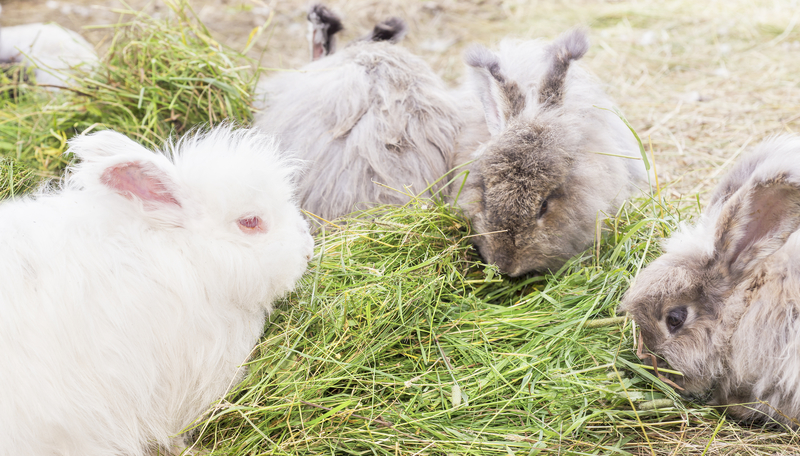You may have heard of angora sweaters. You may even own one! They're made from the shaved fur of these rabbits. You can keep them happy and healthy while selling their high-quality fur.
Angora rabbits can be loyal and loving pets with an added bonus: valuable angora fiber. Angora is highly sought-after by hand spinners and can fetch as much as $10 per ounce. A single rabbit can produce 16-24 ounces of fiber per year ($160-240 per rabbit), which can provide a healthy side income if you keep a few.
Rabbit Breeds
English angoras have long fir covering every part of their bodies, including their faces, ears and feet. Their hair must be clipped or sheared to harvest.
French angoras have short fir covering their faces and feet, and their harvestable wool is only on their main body. Their fir naturally sheds, and once it reaches the appropriate length. Spinners tend to appreciate French angora more because the fir doesn’t have the blunt ends associated with cutting.
Housing
Angora rabbits can be kept in much the same way as any pet rabbit. A hutch with a wire floor is ideal, so that the droppings fall through.
They’re generally clean animals, and they can be litter box trained easily. Many owners keep them as house rabbits, with a litter box and no cage at all.
In cold climates, they should be protected in an insulated building through the winter. Hot climates also can be problematic, and they should always have access to shade and cool water.
Feeding
They can eat standard rabbit pellets that are 16 percent protein, but they do a bit better on show rabbit food that’s 18 percent protein. It’s essential that they have a constant supply of fresh hay for roughage. Fresh vegetables and fruits such as apples, lettuce and carrots also help to prevent impaction.
Grooming
They’re brushed and handled daily to keep them tangle-free and clean of debris.
Harvesting Fiber
Whatever the case, an angora needs to be completely plucked or shaved every three months year-round. In areas with a long winter, that means you’ll be clipping them down in the coldest part of the year, which is yet another reason they need to be kept indoors.
Without their fir, angoras are sensitive to sunburn and dry skin until their new coat comes in.
Selling Fiber
If you intend to sell your fiber, it’s easy to differentiate yourself from the average hobbyist by grading your fiber, describing its attributes accurately (staple length, carded, sheared or plucked, etc.) and taking quality pictures if you’re selling online.
Have you considered raising angora rabbits? If you have them already, what other tips do you have for keeping them as pets?
Article Source: Off The Grid News

Dont forget, they also make great snake food!
And food.